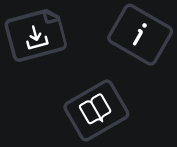迁移到 v3
向后兼容性在大多数情况下得到了保持,但从 v2 迁移到 v3 时,您应该注意一些更改。有些更改与设计模式冲突过多,因此必须进行一些调整。
输出缓冲行为
v3.5.0
输出缓冲 是 PHP 脚本生成的输出在发送到客户端之前存储在缓冲区(PHP 内部)中的过程。这允许您在发送到客户端之前修改输出。
在 MVC 应用程序中,Controller 是“经理”,它管理视图的行为。在控制器外部(或在 Flight 的情况下有时是一个匿名函数)生成输出会破坏 MVC 模式。此更改是为了更符合 MVC 模式,并使框架更可预测、更易用。
在 v2 中,输出缓冲的处理方式是不一致地关闭其自身的输出缓冲区,这使得 单元测试 和 流式传输 更加困难。对于大多数用户,此更改实际上可能不会影响您。但是,如果您在可调用对象和控制器外部回显内容(例如在钩子中),您可能会遇到问题。在钩子中回显内容,以及在框架实际执行之前回显内容,在过去可能有效,但今后将无效。
您可能遇到问题的位置
// index.php
require 'vendor/autoload.php';
// 只是一个例子
define('START_TIME', microtime(true));
function hello() {
echo 'Hello World';
}
Flight::map('hello', 'hello');
Flight::after('hello', function(){
// 这实际上没问题
echo '<p>This Hello World phrase was brought to you by the letter "H"</p>';
});
Flight::before('start', function(){
// 像这样的内容会导致错误
echo '<html><head><title>My Page</title></head><body>';
});
Flight::route('/', function(){
// 这实际上没问题
echo 'Hello World';
// 这也应该没问题
Flight::hello();
});
Flight::after('start', function(){
// 这会导致错误
echo '<div>Your page loaded in '.(microtime(true) - START_TIME).' seconds</div></body></html>';
});开启 v2 渲染行为
您是否仍然可以保持旧代码不变,而无需重写以使其与 v3 兼容?是的,您可以!您可以通过将 flight.v2.output_buffering 配置选项设置为 true 来开启 v2 渲染行为。这将允许您继续使用旧的渲染行为,但建议今后修复它。在框架的 v4 版本中,这将被移除。
// index.php
require 'vendor/autoload.php';
Flight::set('flight.v2.output_buffering', true);
Flight::before('start', function(){
// 现在这就没问题了
echo '<html><head><title>My Page</title></head><body>';
});
// 更多代码 调度器更改
v3.7.0
如果您直接调用了 Dispatcher 的静态方法,例如 Dispatcher::invokeMethod()、Dispatcher::execute() 等,您需要更新代码,不要直接调用这些方法。Dispatcher 已转换为更面向对象的形式,以便更容易使用依赖注入容器。如果您需要以类似于 Dispatcher 的方式调用方法,您可以手动使用类似 $result = $class->$method(...$params); 或 call_user_func_array() 的方式。
halt() stop() redirect() 和 error() 更改
v3.10.0
3.10.0 之前的默认行为是清除标头和响应主体。这已更改为仅清除响应主体。如果您还需要清除标头,可以使用 Flight::response()->clear()。



